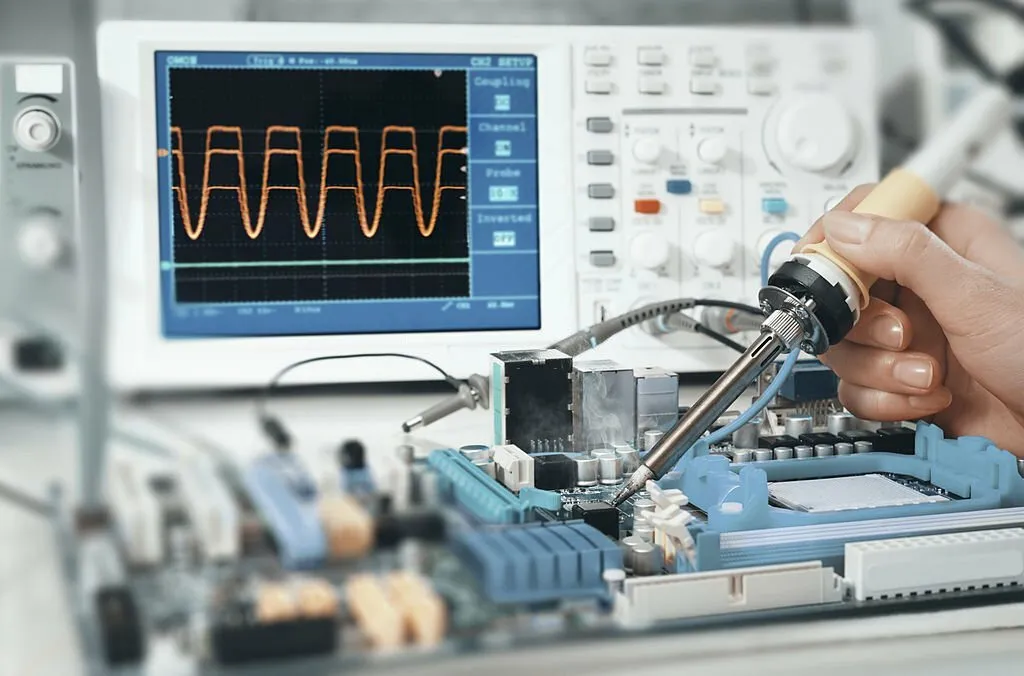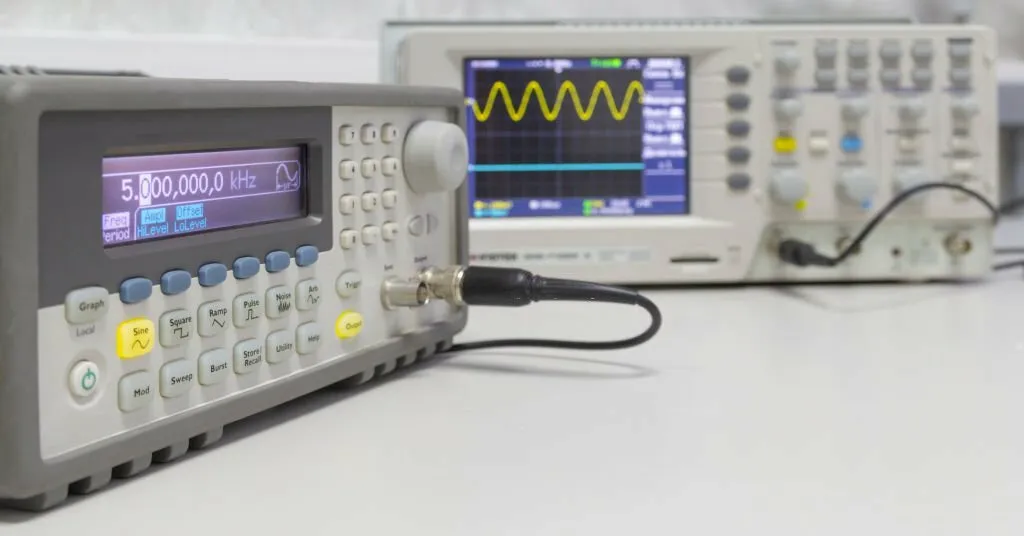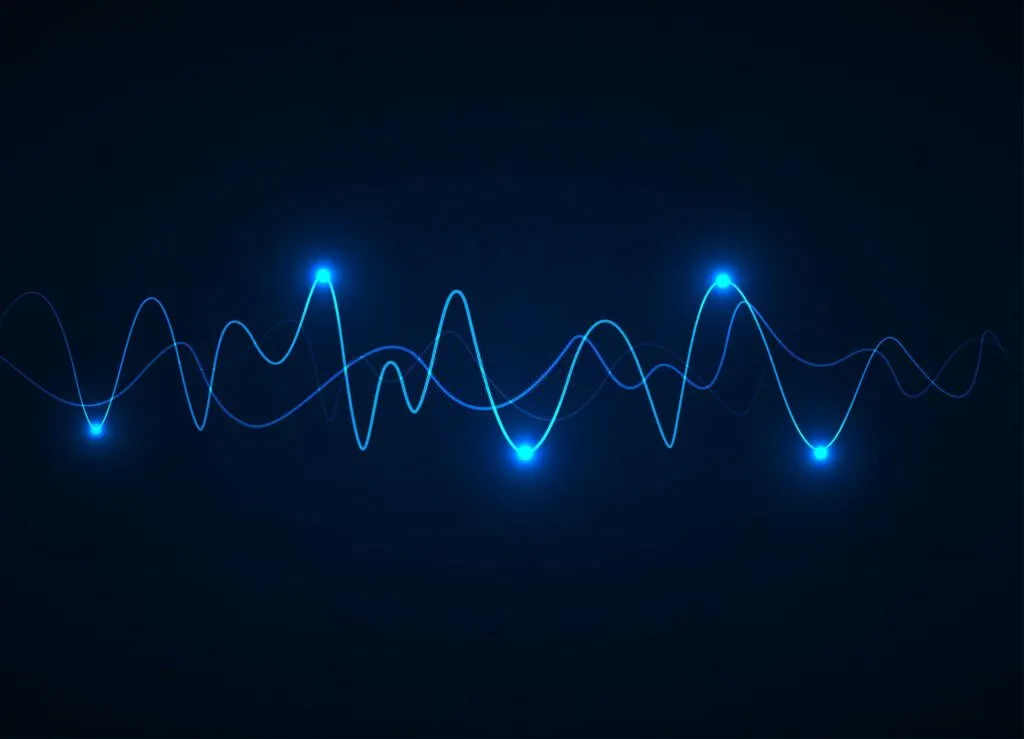
The use of the internet and technology is at its peak. Today, almost every analog equipment and tool has its digital counterpart. The same is the case with oscilloscopes. Along with the analog one, we also have a digital oscilloscope option to choose from.
Moreover, there are also other options available for this sound and wave analysis tool, like online oscilloscopes. However, we will restrict ourselves to digital ones only.
This article thoroughly explores these oscilloscopes, from their basics to their applications. Let’s start learning!

What is a Digital Oscilloscope?
Let’s answer the first question. What exactly is a digital oscilloscope? In simple terms, it is an instrument that records and saves wave patterns.
There is no restriction for input signals. It transforms analog signals to digital signals before monitoring. Recent signal processing techniques enable greater functionality and a more thorough understanding of the signals.
These oscilloscopes can examine frequencies ranging up to many gigahertz. However, the scope’s sampling rate and the converter’s capability are the limits of this. The traces produced by DSO are concise, distinct, and displayed quickly.
How Does It Work?
The DSO converts the input signal and stores it in its memory. Digital memory and CRTs (cathode ray tubes) might accomplish this. Digitization is made simple by regularly sampling the input signals.
These two factors determine its maximum signal frequency.
- Rate of Sampling
- The function of the converter
How To Interpret Oscilloscope?
An oscilloscope creates two-dimensional waveforms by processing input data. Moreover, it shows waveforms graphically for the analysis.
It displays amplitude on the Y-axis, whereas time on the X-axis. Additionally, oscilloscopes can confirm any problems with the electrical circuit by monitoring the waveform on the screen.
What Makes Oscilloscopes Important?
Oscilloscopes evaluate the electrical circuits in appliances such as air conditioners, televisions, and lights.
A circuit is a path with input and output that has a flowing current. The force that creates this potential difference, voltage, allows electric current to flow between two locations.
The circuit will behave strangely if the voltage is unstable. Testing is necessary to determine the problem, and we use oscilloscopes for this process.
An oscilloscope is a helpful tool for diagnosing electrical and electronic systems since it can identify the actual cause of the issue.

Applications of Digital Oscilloscope
An oscilloscope has multiple ways to measure and evaluate voltage and current.
It could be used to monitor a signal’s temporal progression. Given that it indicates whether the tested circuit produces the desired signal, it might be used as an inspection instrument for electrical circuits.
Oscilloscopes are complex instruments used to view circuitry. They provide the ability to analyze the electrical signal almost instantly.
They perform various activities, from basic troubleshooting to comprehensive analysis.
Its application may prove advantageous for the electrical equipment design industry, the medical device testing industry, and other associated sectors. Moreover, we can even use it in audio forensics for crime investigations. Let’s explore various applications:

Auto maintenance
An oscilloscope attached to a car can be used to check the fuel injectors and other parts when the engine is not running. Oscilloscopes enable dependable repairs and quick diagnosis.

Engineering
Among the most common categories of engineers, electrical and electronics engineers frequently employ powerful scopes with plenty of capabilities. In the audio industry, technicians use oscilloscopes to examine how different devices respond to different frequencies.

Science
Scientists and physicists can employ oscilloscopes for a variety of purposes in their labs. Since physicists may utilize scopes to study the effects of various environmental changes, regardless of the presence of television or mobile phone signals, scientists in the nuclear sector may find it advantageous to use them.
Medicine
In their routine patient monitoring, physicians frequently use oscilloscopes. This instance of the phrase “flatline” is produced by a scope tracking a patient’s pulse rate. Second, brain wave monitoring during diagnosis is accomplished in medicine using this technology.
They are even necessary for people who work in the medical and laboratory fields. It is evident how important this technology is to the modern workplace.

Monitoring
You can swiftly resolve issues like placing the incorrect example design on a light card chip with the use of an oscilloscope that is digital. Additionally, you can identify any issues right away by installing an oscilloscope and monitoring the system.
Analyzing signals
Professionals can use DSO to detect signals to assess if there is any component that is malfunctioning.
You can use the oscilloscope to check for small shifts in how parts are working and spot any odd signals. People often forget how handy it is for tracking signals.

Telecommunications Systems
Oscilloscopes are a staple of any electronics technician’s arsenal since they are necessary for identifying and fixing a wide range of everyday electrical devices, such as computers, televisions, air conditioners, and phones.
Therefore, telecommunications Systems use oscilloscopes for troubleshooting reasons in order to maintain proper operation.
Basic Terms and Controls for Oscilloscopes
It is essential to learn the basic terms and controls for oscilloscopes to use them with maximum efficiency and obtain the best results.
- Vertical Position in DSO
- Vertical Gain
- Trigger
- Timebase
- Beam Finder
- Trigger Hold-off
Wrap Up
And that’s a wrap. Digital oscilloscopes are versatile and essential tools for a wide range of applications, from auto maintenance to scientific research. They help us troubleshoot, analyze, and understand electrical circuits, making them indispensable in our increasingly digital world.
